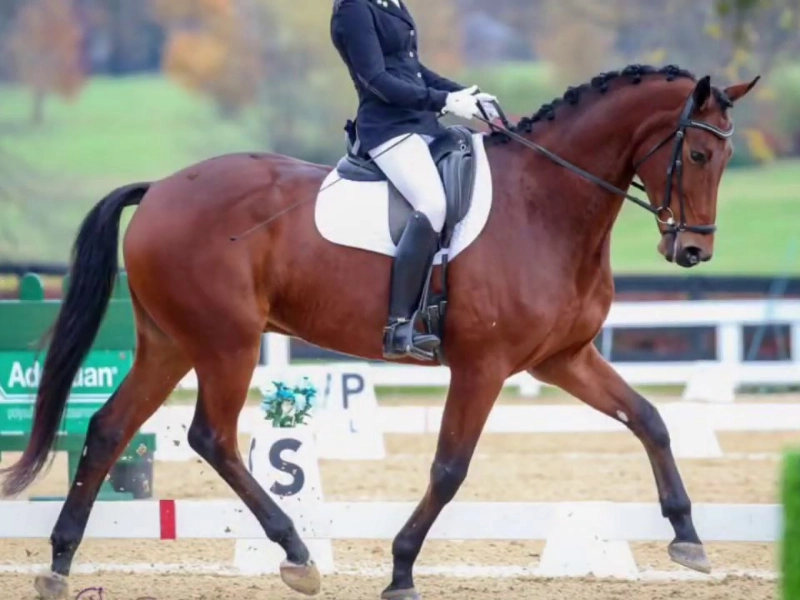Equestrian Etiquette: Dos and Don'ts
1. Understanding Equestrian Etiquette

2. Dos: Respecting the Space and Time of Others
 One of the key aspects of equestrian etiquette is respecting the space and time of others. When at a riding facility, be mindful of your surroundings. Always be aware of where other riders are, especially in busy arenas. If you are warming up or practicing, ensure that you are not cutting off other riders or disrupting their focus. Maintaining a safe distance is crucial for the well-being of both horses and riders.
Additionally, if you are scheduled for a lesson or a training session, arrive on time and be prepared. This shows respect for your instructor's time and the time of others waiting for their sessions. If you need to cancel or reschedule, do so as early as possible to allow your trainer to adjust their schedule. When in a group setting, such as a clinic or a competition, be attentive and supportive of your fellow riders. Cheering them on and offering encouragement fosters a positive atmosphere and strengthens community bonds.
One of the key aspects of equestrian etiquette is respecting the space and time of others. When at a riding facility, be mindful of your surroundings. Always be aware of where other riders are, especially in busy arenas. If you are warming up or practicing, ensure that you are not cutting off other riders or disrupting their focus. Maintaining a safe distance is crucial for the well-being of both horses and riders.
Additionally, if you are scheduled for a lesson or a training session, arrive on time and be prepared. This shows respect for your instructor's time and the time of others waiting for their sessions. If you need to cancel or reschedule, do so as early as possible to allow your trainer to adjust their schedule. When in a group setting, such as a clinic or a competition, be attentive and supportive of your fellow riders. Cheering them on and offering encouragement fosters a positive atmosphere and strengthens community bonds.
3. Don'ts: Avoiding Distractions and Disruptions
 While there are many dos in equestrian etiquette, there are also several important don'ts to keep in mind. One of the most critical is to avoid distractions and disruptions, particularly in shared spaces like arenas or stables. Loud conversations, phone calls, or excessive noise can distract both riders and horses, potentially leading to accidents or misunderstandings.
Furthermore, do not engage in negative behavior, such as gossiping or criticizing others. The equestrian community thrives on mutual respect and support. Instead of focusing on the shortcomings of fellow riders, concentrate on your own progress and offer constructive feedback when appropriate. If you are watching a lesson or a competition, maintain a respectful demeanor. Avoid coaching from the sidelines unless you are explicitly invited to do so. Remember, every rider has their own journey, and it’s important to respect their process without interference.
While there are many dos in equestrian etiquette, there are also several important don'ts to keep in mind. One of the most critical is to avoid distractions and disruptions, particularly in shared spaces like arenas or stables. Loud conversations, phone calls, or excessive noise can distract both riders and horses, potentially leading to accidents or misunderstandings.
Furthermore, do not engage in negative behavior, such as gossiping or criticizing others. The equestrian community thrives on mutual respect and support. Instead of focusing on the shortcomings of fellow riders, concentrate on your own progress and offer constructive feedback when appropriate. If you are watching a lesson or a competition, maintain a respectful demeanor. Avoid coaching from the sidelines unless you are explicitly invited to do so. Remember, every rider has their own journey, and it’s important to respect their process without interference.
4. Dos: Proper Horse Handling
 Proper horse handling is a fundamental aspect of equestrian etiquette that every rider should prioritize. When approaching or handling a horse, always do so calmly and confidently. Horses can sense anxiety or hesitation, which may lead to unpredictable behavior. Approach the horse from the front or side, allowing it to see you, and speak softly to reassure it.
When leading a horse, ensure you hold the lead rope correctly, maintaining a safe distance while staying close enough to control the animal. Always be aware of your surroundings and other horses nearby to prevent accidents. Additionally, when grooming or tacking up, respect the horse's space and be gentle. Horses are sensitive creatures, and rough handling can lead to discomfort or fear.
Moreover, if you are in a shared space, such as a barn or wash rack, be mindful of others. Keep your area tidy, and clean up after yourself. This consideration helps maintain a pleasant environment for everyone, making the experience more enjoyable for all equestrians involved.
Proper horse handling is a fundamental aspect of equestrian etiquette that every rider should prioritize. When approaching or handling a horse, always do so calmly and confidently. Horses can sense anxiety or hesitation, which may lead to unpredictable behavior. Approach the horse from the front or side, allowing it to see you, and speak softly to reassure it.
When leading a horse, ensure you hold the lead rope correctly, maintaining a safe distance while staying close enough to control the animal. Always be aware of your surroundings and other horses nearby to prevent accidents. Additionally, when grooming or tacking up, respect the horse's space and be gentle. Horses are sensitive creatures, and rough handling can lead to discomfort or fear.
Moreover, if you are in a shared space, such as a barn or wash rack, be mindful of others. Keep your area tidy, and clean up after yourself. This consideration helps maintain a pleasant environment for everyone, making the experience more enjoyable for all equestrians involved.
5. Don'ts: Ignoring Safety Protocols
Safety should always be a top priority in the equestrian world, and ignoring safety protocols is one of the biggest faux pas you can commit. Whether you are riding, handling, or simply being around horses, always wear appropriate safety gear. This includes helmets when riding, proper footwear, and, when necessary, body protectors. These items are not just for your safety; they set a standard for others in the community. Additionally, do not engage in risky behavior, such as riding without supervision if you are a novice or attempting jumps beyond your skill level. Always follow the established rules of the facility, including guidelines for riding in the arena, trail etiquette, and stable management. If you are unsure about any protocols, don’t hesitate to ask a trainer or experienced rider for clarification. Ignoring safety measures not only puts you at risk but can also endanger others around you.
6. Dos: Communicating Effectively
Effective communication is vital in the equestrian world, whether you are interacting with your horse, trainer, or fellow riders. When working with your horse, develop clear cues and signals to establish a strong bond and mutual understanding. Horses respond best to consistent communication, so ensure that your body language and verbal commands are aligned. When interacting with trainers or instructors, ask questions if you need clarification. A good trainer appreciates an engaged student and is happy to provide guidance. During group lessons or clinics, maintain open communication with your peers. Sharing insights or tips can enhance the learning experience for everyone involved. Furthermore, when attending events or competitions, be respectful in your communication with officials and volunteers. They work hard to ensure that everything runs smoothly, and a polite attitude goes a long way. Thanking them for their efforts fosters goodwill and contributes to a positive atmosphere at equestrian events.
7. Don'ts: Disregarding Facility Rules
Every equestrian facility has its own set of rules and guidelines designed to ensure safety and enjoyment for all users. Disregarding these rules is not only disrespectful but can also lead to dangerous situations. Always familiarize yourself with the specific regulations of the barn or riding school you are using, whether regarding riding hours, arena usage, or stable care. Avoid bringing in outside horses without permission, as this can disrupt the established order and cause stress among the resident horses. Additionally, do not use equipment or facilities without prior approval. This includes jumping equipment, cross-country courses, or even specific grooming tools. Respecting the rules ensures a safe and harmonious environment for everyone involved in the equestrian community. By adhering to the established guidelines, you contribute to a culture of respect and responsibility that benefits all equestrians.









